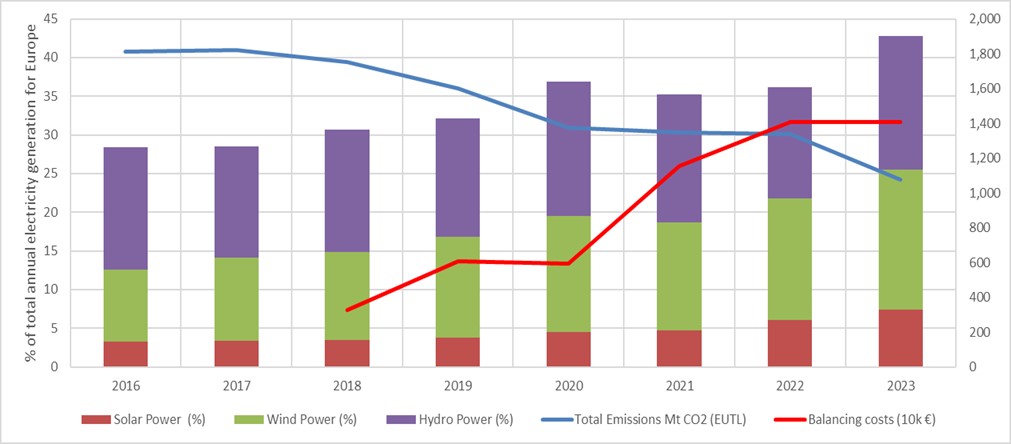
AI weather models have made a huge progress; even though they have no physics behind them, these models can learn physics very efficiently. In the past 2 years, AI-based models have progressed as much as conventional, physical-based models in 8 years. “Very soon these models will be an integral part of the decision-making process at MET Group,” adds Vasilis Pappas.
At MET International, the trading arm of MET Group, the Senior Meteorologist uses weather data directly from ECMWF (European Centre for Medium-Range Weather Forecasts). As he explains, an increasing number of energy market participants use weather analysis nowadays and the competition is strong. Trading companies, large industrial customers, utilities, grid operators – they all want to know how weather will influence energy supply, demand and, of course, prices at the end of the day.
Climate change has had a crucial impact on the weather in recent decades: no matter what reference period we use, we can see that nearly every year is warmer than the previous one. “Temperature is not the only issue, there is a significant loss in ice and glaciers, and water levels are increasing,” warns Vasilis Pappas.

Global-average surface air temperature anomalies relative to 1991–2020 averaged over the first nine months of the year (January to September, or ‘year-to-date') from 1979 to 2024. Data source: ERA5. Credit: Copernicus Climate Change Service/ECMWF
How can we mitigate climate change? Renewable energy production has been at the forefront in the past 20 years, along with energy efficiency measures. Europe managed to reduce total CO2 emissions, notes the meteorology expert. On the other hand, balancing costs – that need to be paid by TSOs (transmission system operators), responsible for keeping the electricity systems balanced at every moment – have increased considerably, due to the volatility of solar and wind energy production.
There is a growing consensus among energy market participants on the steps to be taken, starting with the Paris Agreement and targets set by the UN conferences, as well as ambitious national contribution plans. “In Europe, the phase-out of fossil fuels is under way, with natural gas remaining the transition fuel for at least the next 20 to 25 years,” says the Senior Meteorologist. Investments in more efficient, low or zero carbon technologies are also imperative, as well as the integration of sustainability in strategic planning.

Data sources: IEA, EUTL, ENTSOE
